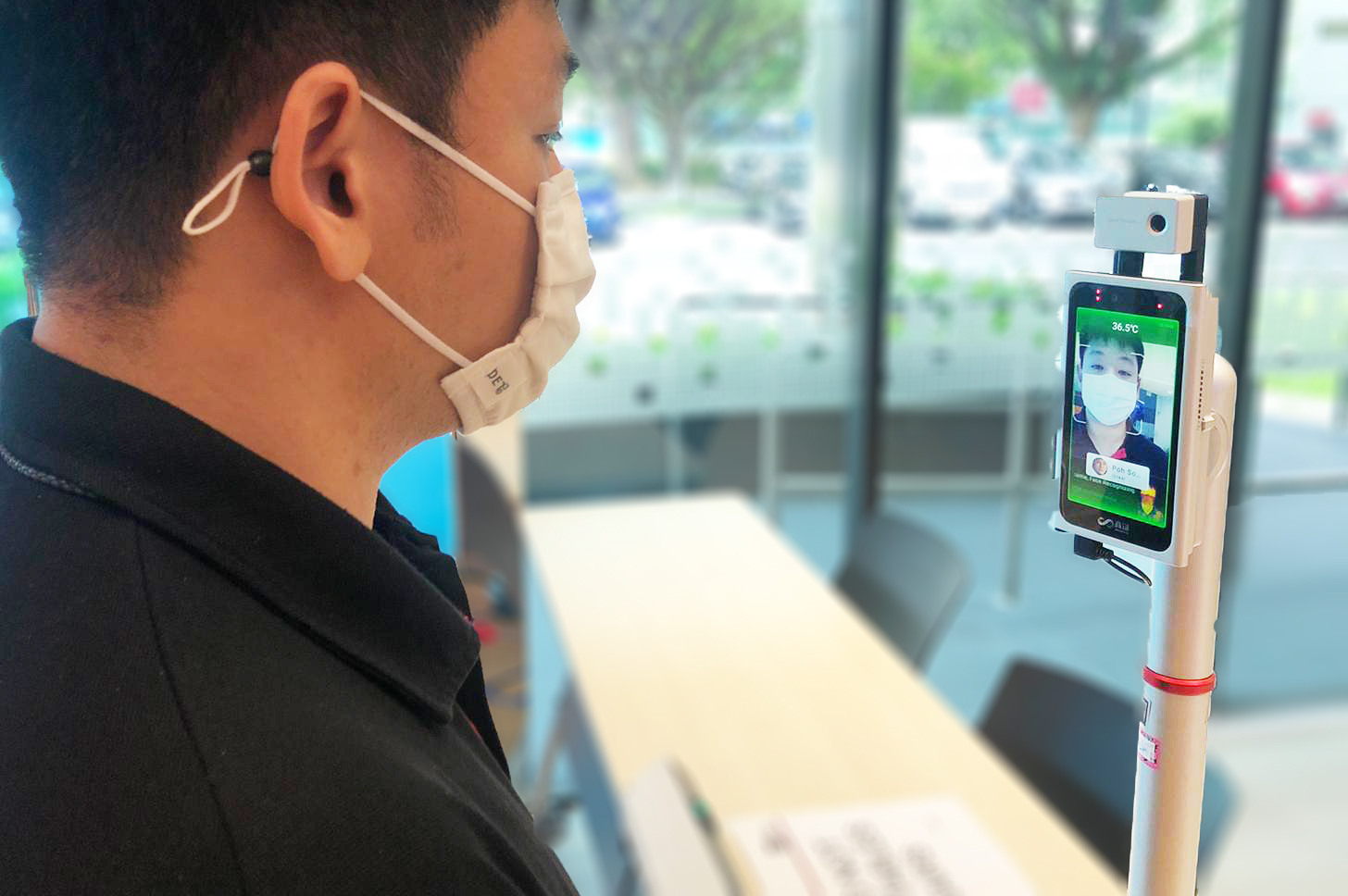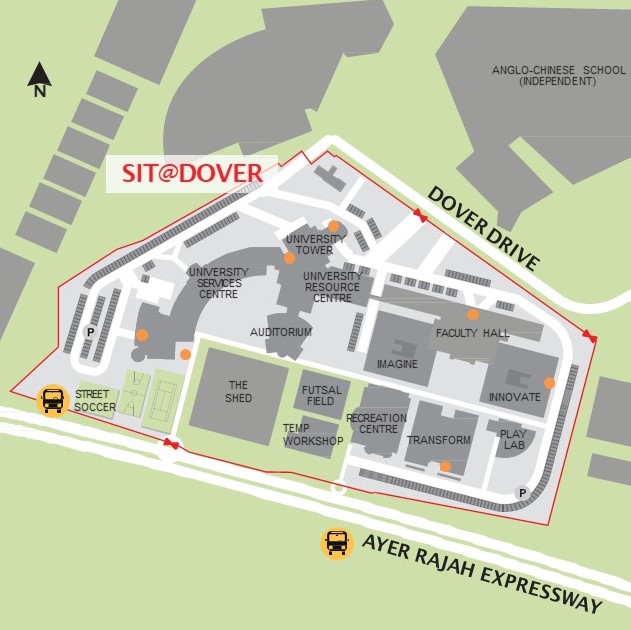 Enabled with facial recognition technology, the integrated system eases SafeEntry registration, temperature screening, and health declaration for all SIT students and staff.
Enabled with facial recognition technology, the integrated system eases SafeEntry registration, temperature screening, and health declaration for all SIT students and staff.
As Academic Year 2020 (AY2020) commenced, SIT implemented an Integrated Declaration System (IDS). The IDS is a convenient and smart tool added to the safe management measures that are already in place for the SIT community.
To facilitate smooth entries for all students and staff, 12 locations across all six SIT campuses have been equipped with the IDS. Seven spots within SIT@Dover, as well as each of the main entrances of the respective SIT@Poly Buildings, are now furnished with the system. Through its temperature screening and facial recognition capabilities, the IDS will match students and staff’s facial images with their identification records, and automatically facilitates the health declarations and SafeEntry check-ins required.
Visitors are also able to utilise the system to get their temperatures screened before registering their SafeEntry through QR code scanning.
 A total of seven locations at SIT@Dover have been equipped with the IDS.
A total of seven locations at SIT@Dover have been equipped with the IDS.
Jointly led by the university’s Communications & Information Technology (CIT) and Safety & Health (S&H) divisions, the IDS was successfully rolled out with support from other divisions including Estates, Registrar’s Office, and Human Resources. The technical aspects of the implementation were fronted by CIT, while S&H oversaw the entire process from conceptualisation to implementation. The university engaged leading Artificial Intelligence (AI) technology solutions provider SenseTime for the incorporation of facial recognition technology into the system, and involved StarHub for both its overall solution framework and deployment.
Tests and iterations took place over six months, with the initial Proof of Concept for facial recognition thermal cameras starting in March 2020. A key challenge that the CIT team faced was to implement a customised solution specifically tailored for the university.
“Working closely with multiple consultants amidst the restrictions that came with Circuit Breaker, as well as Phases 1 and 2 of the safe re-opening of business operations, was a huge task. We had to fine-tune the entire facial recognition thermal screening solution and deploy all devices in time. We also had to meet strict data security requirements within the tight timeline of three weeks — right before the start of AY2020,” the CIT team shared.
Both staff and Safe Distance Ambassadors (SDA) contributed to system trials during Phase 1, which led to the actual implementation on 7 September 2020.
Staff involved in the project shared that the effort amidst the time-crunch had certainly paid off. Lee Kian Hong, Assistant Director, Safety & Health, SIT, commented that teamwork was crucial in the successful roll-out of the IDS. “The past months have been challenging but it’s heartening to witness the university being united in purpose. We came together for a common goal — and that is to ensure a safe environment for everyone,” he said.















![[FA] SIT One SITizen Alumni Initiative_Web banner_1244px x 688px.jpg](/sites/default/files/2024-12/%5BFA%5D%20%20SIT%20One%20SITizen%20Alumni%20Initiative_Web%20banner_1244px%20x%20688px.jpg)


